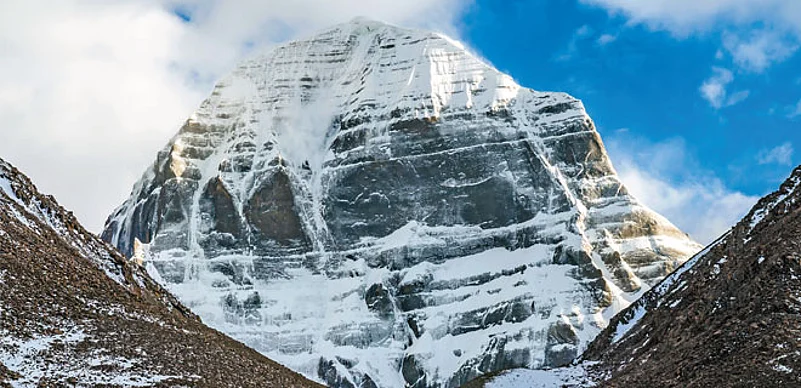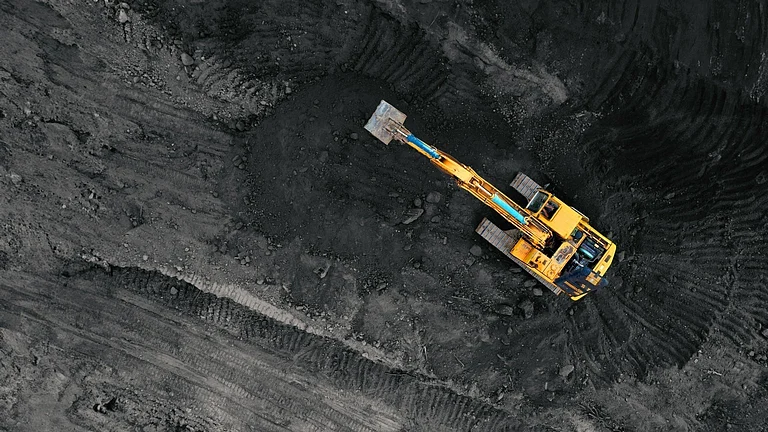Chinese President Xi Jinping brought some good news for Indian travellers during his 2014 visit to India: Beijing agreed to open a second route to Kailash Manasarovar from Sikkim’s Nathu La. The announcement was great news for the travellers who zealously queue up for the arduous 25-day journey with the Indian government’s Ministry of External Affairs (MEA) every year.
The Sikkim route will drastically reduce the trek to just three days for Kailash Parikrama instead of 12 days or more, which the existing route through Uttarakhand’s LipulekPass requires.
But for some years now, many Indian travellers have chosen to take routes passing through Nepal to reach the highest of pilgrim spots. The Chinese authorities allow Nepalese travel agents to organise trips to MountKailash, but under strict—and sometimes arbitrary— terms and conditions. There are limited numbers of permits and the choice of hotel and transport, too, is decided by the Chinese authorities. Tourists are under constant surveillance and have to follow curfew orders (be indoors after sunset) in the sensitive Tibetan towns. Nevertheless, the two Nepal routes offer a viable and more convenient option for travellers. So, there are actually four routes now for the Indian tourists to explore this difficult-to reach destination. Let’s take a look at them.
VIA KODARI

Route: Kathmandu-Kodari-Nylam-Saga-Paryang-Manasarovar
Cost: $1,210 + Rs.45,000 (by SUV); $1,010 + Rs.45,000 (by bus)
This route is popular among Indian tourists. From Kathmandu you drive to Kodari border and enter China. There you get into the Land Cruisers and buses allocated by the Chinese authorities, depending on your budget, and drive to Nylam, a Silk Route trading post at 15,000 ft. The next day’s journey over the Lalunga La (La means pass) at 5,050 metres, skirting the base camp of Mount Shishapangma (8,027 metres) and the 27-km long Paiku or Pekur Lake through desert-like dusty tracks is a memorable one even for the most hardened traveller.
If you opt for the Land Cruiser, this 900-km journey through Tibet is not just more comfortable but also more scenic. But, there is no air conditioning in the vehicles to protect you from the extreme variations in the temperature and the dust of the Tibetan desert.
Drawback: Stopovers at Nylam, Saga and Paryang are far from comfortable and basic facilities, like food, are not so good.
VIA LIPULEK PASS
Route: Delhi-Kathgodam- Almora-Dharchula- Narayan Ashram-Taklakot- Manasarovar
Cost: Rs.1.5 lakh
This is the most well known route, but at the same time, is also the most difficult. The MEA, by a draw of lots, decides the lucky few who can take the trip. It involves 12 days of walking just to reach Manasarovar. But take heart from the fact that most travellers attest to the great effort and care the organisers take. The journey through Uttarakhand’s high mountains adds to the Kailash experience.
Drawback: It is the most arduous and demanding of the four routes. Aside from that, you need to meet the MEA’s stringent fitness and health standards to be a part of this trip.

VIA SIMIKOT (HELICOPTER)
Route: Kathmandu-Nepalgunj-Simikot-Hilsa-Purang-Manasarovar
Cost: $1,400 + Rs.93,000 per person
This trip is organised by Nepalese tour operators and involves the least hardship. You fly to Kathmandu; then to Nepalgunj and Simikot; from there take a helicopter to Hilsa; and Manasarovar is only four hours by road.
Drawback: Reaching such heights in such short duration doesn’t give you time to acclimatise to the high altitude. The Kailash Parikrama involves at least two days of trekking at 16,000 ft, and your body (and lungs) needs to get used to the thin air to be able to complete the journey.
VIA NATHU LA
Route: Delhi-Gangtok- Sherathang-Kangma (via Nathu La)-Lazi-Zhongba- Manasarovar
Cost: Rs.1.7 Lakh This new route that will open from June 2015 will be similar to the Kodari route. The only walk involved is the parikrama around MountKailash. After flying to Gangtok, the travellers will board buses that will take them to Manasarovar. This route will also take less time than the Lipulek one.

ABOUT KAILASH
Peak: 6,638 metres
Altitude: 4,800-5,600 metres
■ MountKailash has never been climbed
■ The source of three biggest river basins: Brahmaputra, Indus’ tributary Sutlej, and Ganga’s tributary Karnali
■ Believed to be the centre of the earth, the place of origin of life, the mythical abode of Lord Shiva
■ Venerated by Hindus, Buddhists, Tibetans, Bonpos and Jains
■ Known as Meru, Sumeru (both mean the highest point), Sushumna (the spiritual axis), Hemadri, Deva Parvat, Rajatgiri, Ratnasanu, etc. The Tibetans call it Kang Pimpoche and the Chinese call it Kangrinboje
■ Manasarovar is inextricably coupled with Kailash, both in terms of geography and spiritual symbolism. This miraculous 320 sq. km freshwater lake, in the midst of Tibet’s salt water lakes, reflects MountKailash in its icy, clear blue waters

KAILASH PARIKRAMA
Night halts: Diraphuk and Zuthulphuk
Means: On foot/ponies/jeep
While the Manasarovar parikrama is now completed by special eco-friendly buses the Chinese authorities provide, the Kailash parikrama is one that will test your mettle, faith and fitness. The three-day trek around MountKailash, at altitudes as high as 16,000 ft where breathing becomes difficult after 10 minutes of walk, can be a gruelling task. Most tourists opt for ponies, but it is expensive at Rs.18,000 while a guide will cost you Rs.6,000 for three days. The price keeps changing depending on the availability and the weather. Also, if you decide to take a pony on the second day you will have to pay extortionate rates up to Rs.15,000, and there is no guarantee that you will find a pony in the vastness of Diraphuk.
Diraphuk is the first night halt, and Zuthulphuk the second. The first day you walk 13 km from Yam Dwar; the second day 24 km from Diraphuk to Zuthulphuk (and cross Dolma La and Parvati Kund en route).


























